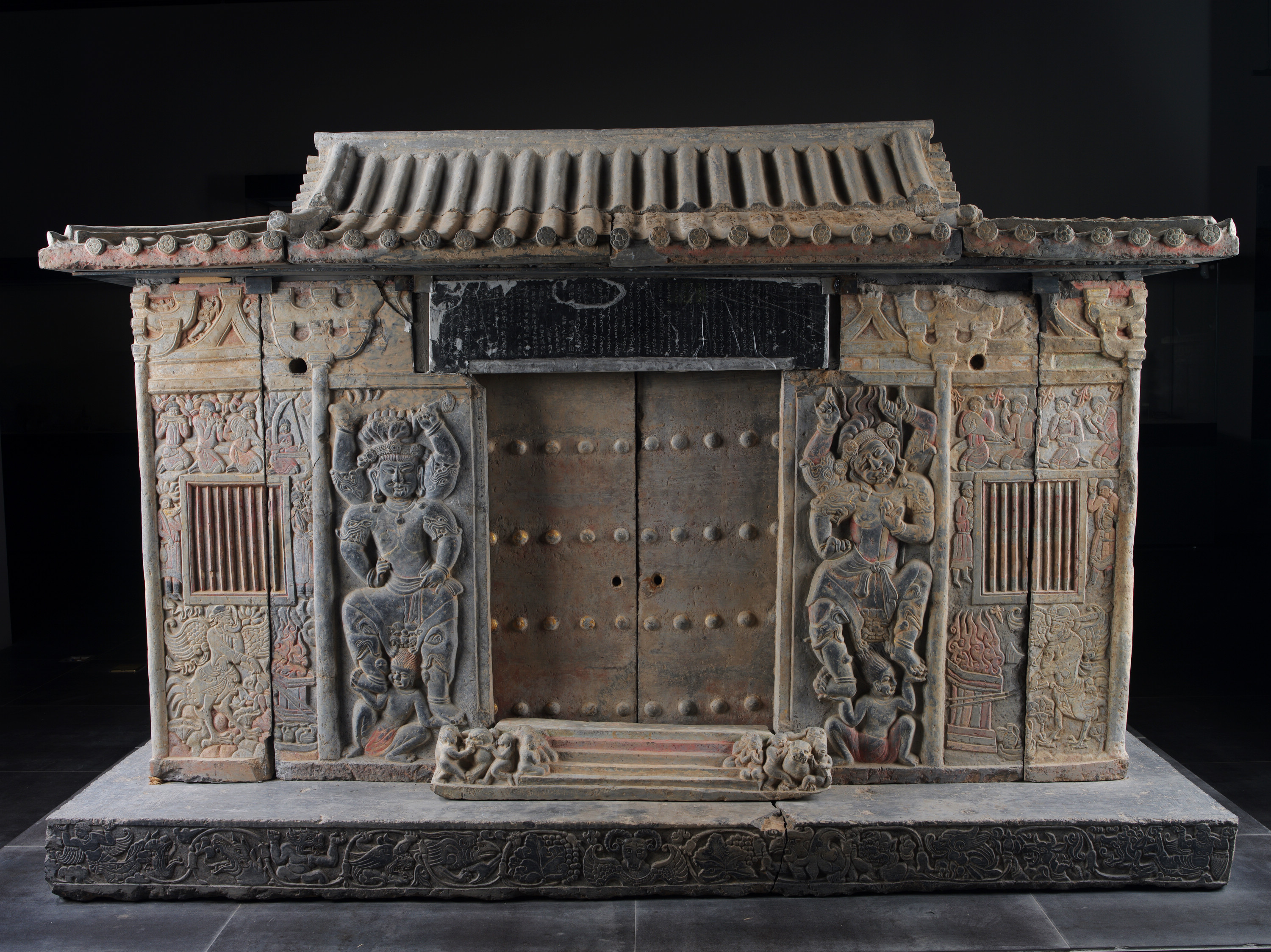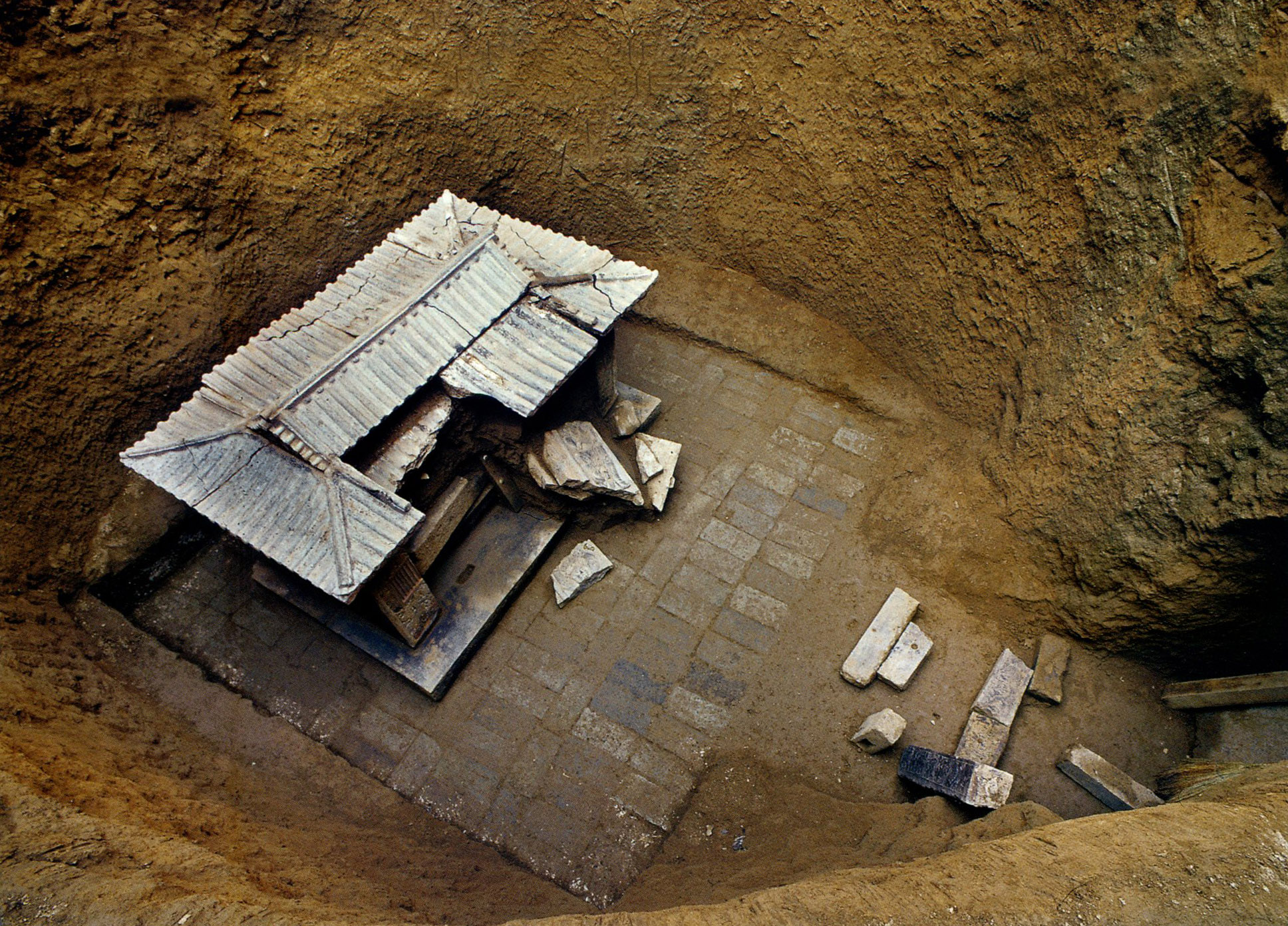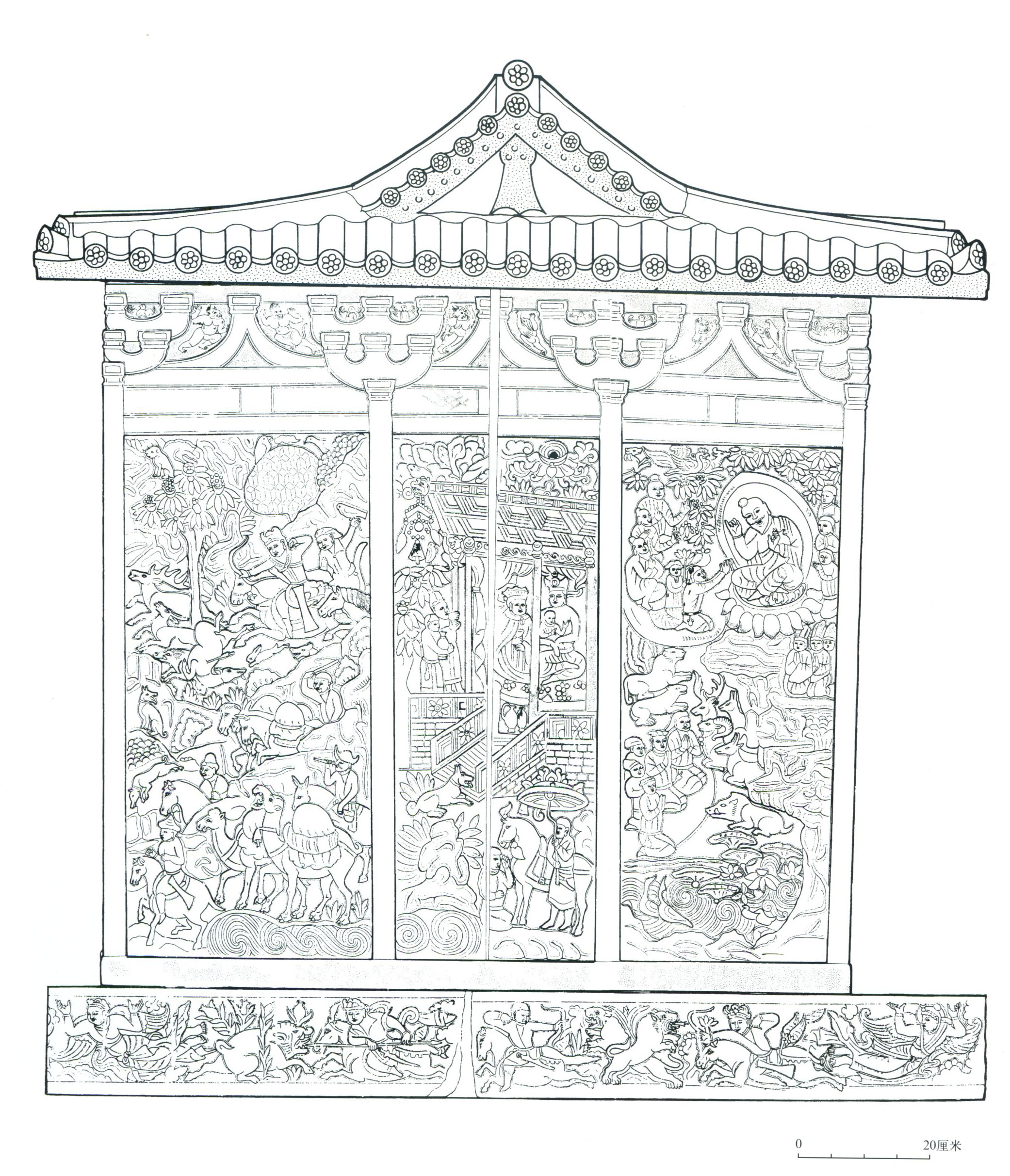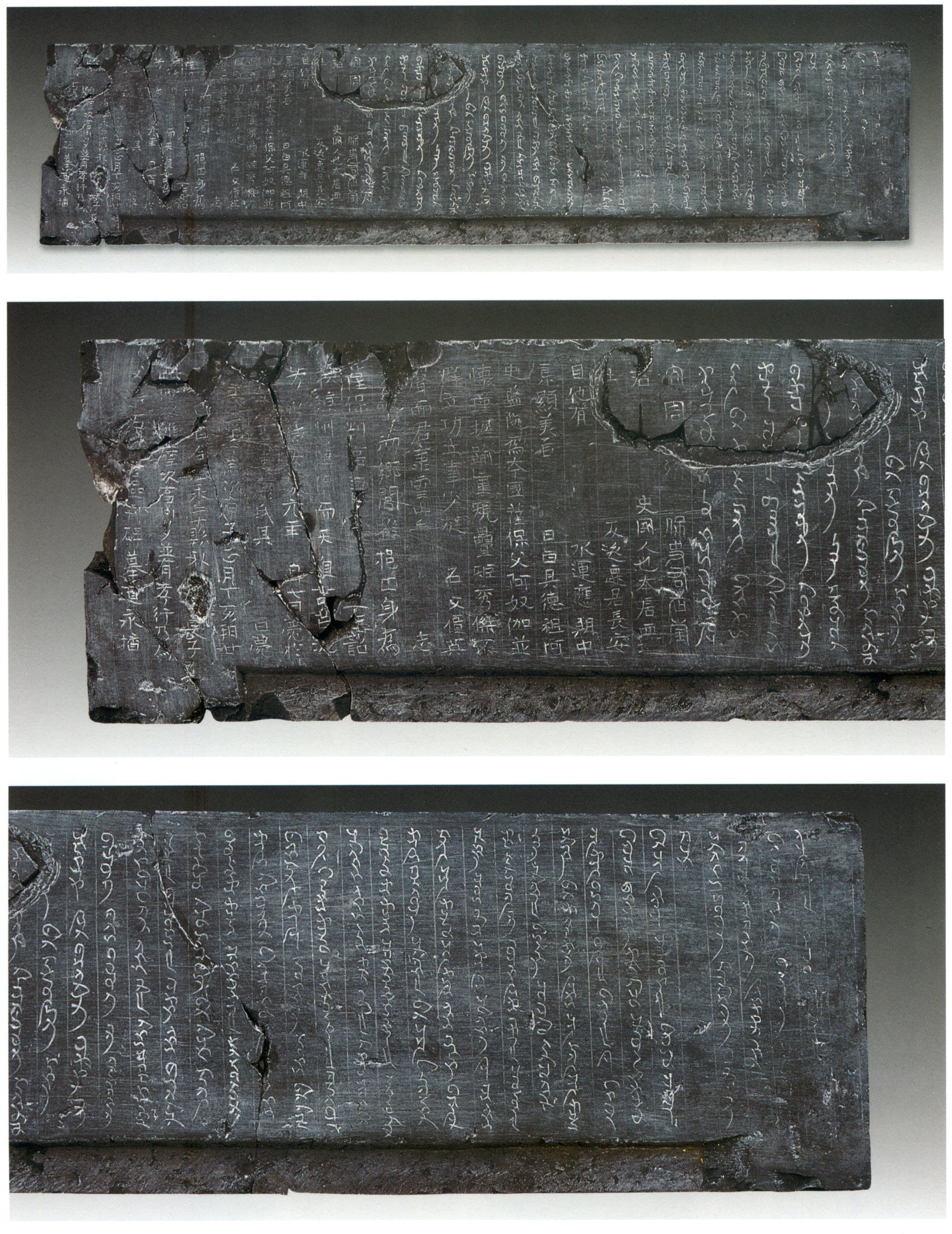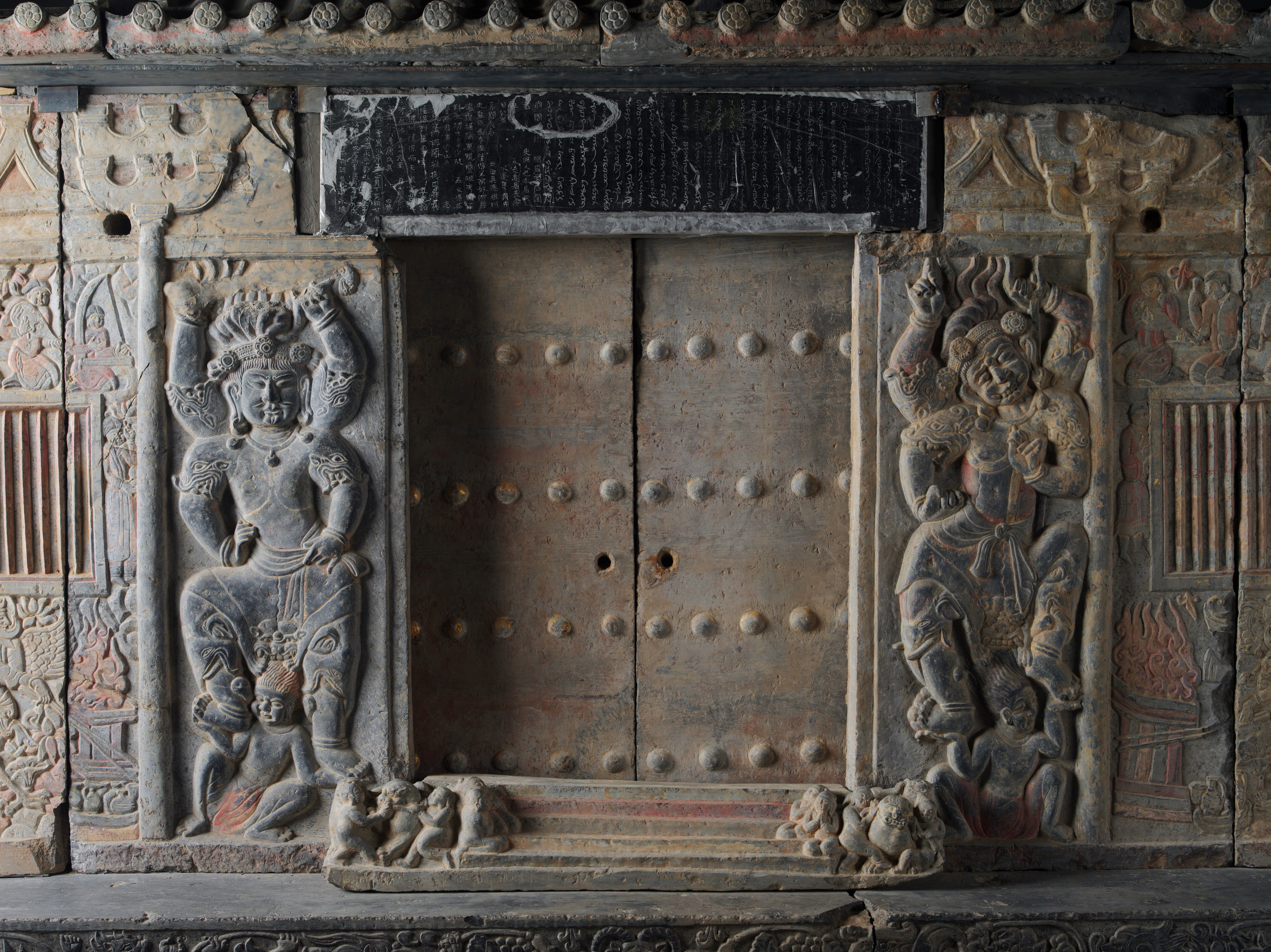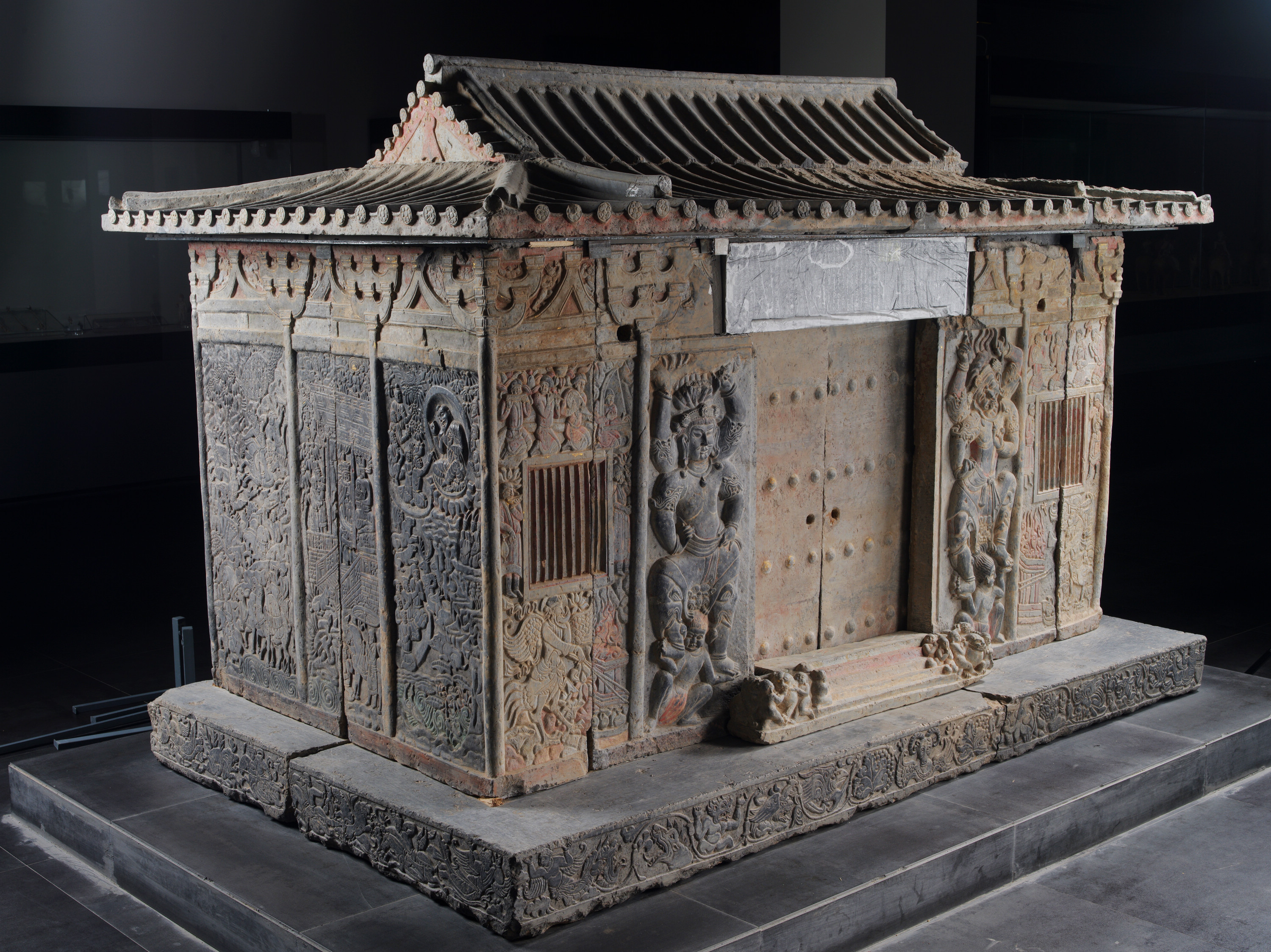DepthReading
Shi Jun Tomb of the Northern Zhou Dynasty
(Abstract of the Book "Shi Jun Tomb")
Located
in the east of Jingshang Village, Daminggong Town, Weiyang District, Xi′an
City, the joint tomb of Mr. Shi (surname) and his wife Kang were buried in the
second year of Daxiang, Northern Zhou period (AD 580).
From June to October 2003, this tomb was excavated by Xi′an Institute of
Archaeology. Relics such as stone gates, chamber, bed, gold finger-rings, coins
and ornaments were unearthed. The stone carvings were cut in relieve,
painted in colors and coated with gold foil. The subjects are related with Han
culture and Zoroastrianism. According to the inscription on the stone chamber,
the title of Shi was Sabao, the administrator of Zoroastrianism in Liangzhou,
during Northern Zhou dynasty.
The cave tomb with long slope path and yard
faces south with an azimuth of 186°. With a
total length of 47.26 m, it consists of ramp, yard, tunnel, a corridor and a
chamber,. The ramp extends southward from the chamber, measuring
A sarcophagus
was found in the mid-north of the chamber. It is 2.46m long, 1.55m wide, and 1.58m in
height. Shaped like a hall with a hip-and-gable roof, it is
formed of a base, middle wall-slabs and a top. The four sides are carved with four-arm
guardian deities, Zoroastrianist divinities, and scenes of sacrifice, going up
to Heaven, banqueting, procession and hunting, all
in relief. Their subject
and style demonstrate features of the Western Regions. In addition,
inscriptions of the tomb owners’ career are manifested on the sarcophagus, both
in Sogdian and Chinese.
Mural paintings can be seen in the
ramping passage way and the chamber. However, the subjects are undistinguishable owing to the poor condition. The relieved carvings on the sarcophagus, beds and gates are rich in content, reflecting Zoroastranism and its culture influenced from Han. More importantly, invaluable evidence for the study of Sogdian culture, such as writing and the Sogdians emigrations in China are provided by the bilingual inscriptions, as well as the official institution of Sabao and the Sogdian burial in Chang’an.
Category: English
DepthReading
Key words:

